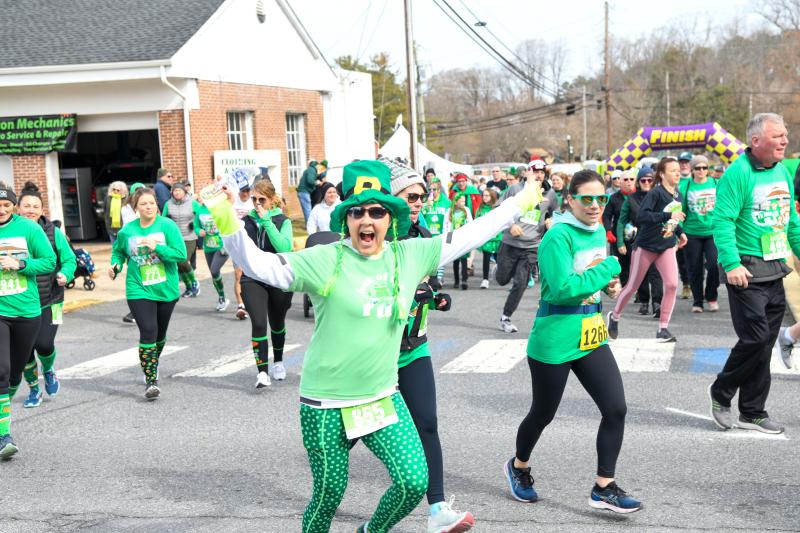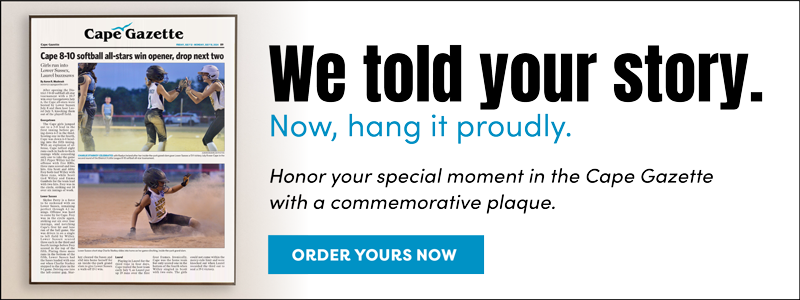Vision Quest: seeing and assessing the sports world all around us
Vision Quest - Cape wrestling grappled at Sussex Tech Feb. 7, when the Ravens put a scare into the Vikings before the Mattioni muppets escaped back to the Cape with a 44-29 victory. I was impressed with the crowd enthusiasm of the Ravens and sensed a sportside surge, and with a new school coming, somebody better look out. The Henlopen Conference is a hard place to make a living in the sport of wrestling. I had my own vision of successes and wanted to celebrate four Sussex Tech wrestlers in the Athletes of the Week section. Sussex Tech qualified for state duals (eight teams), and in the final tournament, placed eighth out of 39 teams. The Ravens also crowned three state champions at the 2024 Delaware girls’ championships Feb. 18, including Logan Flood, 138 pounds; Mackenzie Adams, 145; and Lilly Nguyen, 152.
Lollygaggers - The February lull in the running calendar transitions to an active March racing schedule, what I call, “In like a lion and out like a Lamborghini.” You can read all about it in Tim Bamforth’s running column or just look at pictures on Fredman’s Facebook page. Two of my main social groups are rastlers and runners, counterbalanced on the teeter-totter of discontent with laxers and lollygaggers.
Counting cards - I try not to go all sports-and-society by rendering a sociological analysis of the role of race in high school and college sports. “Who let the cat out of the bag?” is a common expression, but the bigger question is, “How did the cat get in the bag in the first place?” This cat steers clear of bags that require claws to escape. There is a biracial factor in sports that wasn’t in play 40 years ago. Tennis player Madison Keys, biracial, was asked how she self-identified, and she politely and sweetly answered, “I’m just Madison.” I have noticed that private secondary schools and Ivy League schools have more Black athletes than 20 years ago by a long shot. On July 29, the Supreme Court decision on affirmative action effectively ended race-conscious admission practices in higher education. I watched a women's basketball game last week, Harvard versus Penn, at the Palestra in Philly. The game featured mostly athletes of color; what I read into it was nothing, but I wondered “How does any of it work?” As Sam Cooke sang in 1964 (my day), “It’s been a long time coming, but I know a change gon’ come.”
Roster reveal - I look at posted rosters for all the sports, then break them down six ways from Sunday. Sunday itself is a day of rest. I first look at the number of seniors, then check out the JV roster to see if any athletes are on both. I also look for freshmen and eighth-graders on varsity teams. I sometimes see opposite problems, from senior-heavy rosters that are all also loaded with freshmen talent to solid varsity programs without depth of numbers to field competitive JV teams. Rostering 101 requires a number next to the name and timely reporting of scores. The best coaches utilize smart managers, because when it comes to the digital age, students are the best recorders and reporters.
NFL Combine - I watched some Combine stuff on television last week, and of course what’s missing is contact. Eagles fans will remember the drafting of Mike Mamula, a defensive end out of Boston College taken in the first round with the seventh pick in the 1995 draft. Mamula was the first Combine creature. He trained specifically for it, and at 6-feet-5-inches and 252 pounds, he was a strong and agile beast. He was often referred to as a workout warrior. The gyms in 2024 are filled with these people, but it doesn’t mean they are ready to play in the NFL.
Dead cap space - Pertaining to the NFL, it’s money on your salary cap for a player no longer on your team. A franchise tag is a one-year guaranteed contract, as in, “They slapped him with the franchise tag.” It can only be used once; it keeps a player from going into free agency. It’s complicated and has no relevance to everyday people with real jobs.
Snippets - Cape historically had a few gifted athletes who did two school sports in the same season; in most cases, the second sport was track & field. Now, a second sport would be outside of school, from AAU and travel teams. I wonder in addition to all that, how come so many talented athletes have high GPAs – you know, the Academic All-Conference crew? I don’t get into cerebral conferences with athletes because it just doesn’t seem like something they are looking for. Go on now, git!



















































